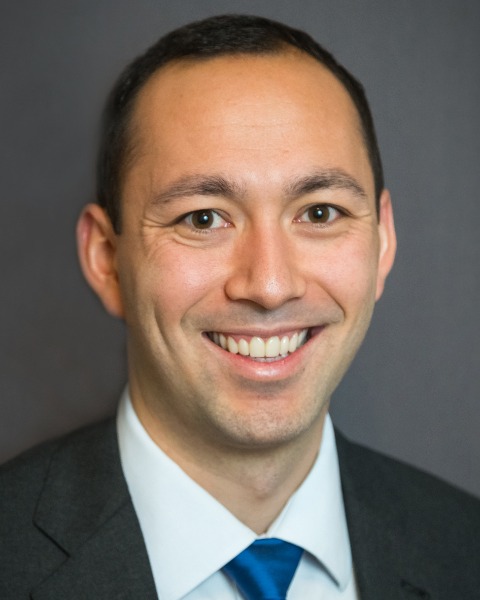Back
Poster, Podium & Video Sessions
Podium
PD25: Health Services Research: Practice Patterns, Quality of Life and Shared Decision Making II
PD25-10: Evaluation of Urologic Patient Reported Peri-Operative Financial Toxicity
Saturday, May 14, 2022
11:00 AM – 11:10 AM
Location: Room 244
Daniel Au*, Jared Starkey, Jeffery Thompson, William Parker, Kansas City, KS

Daniel M. Au, MD
The University of Kansas Medical Center
Podium Presenter(s)
Introduction: Financial toxicity is an area of increasing focus; however, most research has been directed towards chronic illness, acute hospitalizations, or cancer care. Previous urologic research in financial toxicity has focused on oncologic patients where different demographics and clinical courses from benign urologic patients are expected. This disparity in research focus within financial toxicity limits our understanding of the extent of financial toxicity across the spectrum of urologic practice.
Methods: A cross-sectional study of 182 patients undergoing selected oncologic and benign urologic procedures at a single academic medical center was performed. All patients completing robotic assisted laparoscopic prostatectomy (RALP), transurethral resection of bladder tumor (TURBT), radical cystectomy (RC), holmium laser enucleation of the prostate (HoLEP), intravesical chemodenervation (IC), ureteroscopy laser lithotripsy (URSLL), and ureteral stent exchange (SE) during study period were offered enrollment. Retrospective review, patient interviews, and the previously validated COmprehensive Score for financial Toxicity (COST) survey (scale 0-44 lower scores equal worse financial toxicity, 14-25 moderate, =13 severe) were used pre and post-op. Descriptive statistics and logistic regression models compared COST scores by type of urologic procedure.
Results: 80 (44%) patients underwent oncologic procedures (RALP, TURBT, RC) and 102 (56%) benign procedures (HoLEP, IC, URSLL, SE). Benign patients were younger with a median age of 56.7 compared to 64.9 for oncologic and more likely to have lower income. Distribution of primary insurance type was not different between benign and oncologic groups (p=0.4). Less than 2% of patients were uninsured. 27.5% and 7.8% of benign procedural patients compared to 18.8% and 6.3% of oncologic had pre-op moderate or severe financial toxicity COST scores, respectively. In adjusted models there was no difference in peri-op severe financial toxicity between benign and oncologic procedural patients (p>0.7).
Conclusions: 1 in 4 insured patients undergoing common urologic procedures experienced moderate to severe financial toxicity. Although patients undergoing urologic oncologic and benign procedures typically have differing clinical courses and demographics, significant financial toxicity was equally common among both populations. Prior research focusing heavily on financial toxicity within urologic oncology care should be expanded to benign populations and interventions should be developed to address this significant toxicity.
Source of Funding: None
Methods: A cross-sectional study of 182 patients undergoing selected oncologic and benign urologic procedures at a single academic medical center was performed. All patients completing robotic assisted laparoscopic prostatectomy (RALP), transurethral resection of bladder tumor (TURBT), radical cystectomy (RC), holmium laser enucleation of the prostate (HoLEP), intravesical chemodenervation (IC), ureteroscopy laser lithotripsy (URSLL), and ureteral stent exchange (SE) during study period were offered enrollment. Retrospective review, patient interviews, and the previously validated COmprehensive Score for financial Toxicity (COST) survey (scale 0-44 lower scores equal worse financial toxicity, 14-25 moderate, =13 severe) were used pre and post-op. Descriptive statistics and logistic regression models compared COST scores by type of urologic procedure.
Results: 80 (44%) patients underwent oncologic procedures (RALP, TURBT, RC) and 102 (56%) benign procedures (HoLEP, IC, URSLL, SE). Benign patients were younger with a median age of 56.7 compared to 64.9 for oncologic and more likely to have lower income. Distribution of primary insurance type was not different between benign and oncologic groups (p=0.4). Less than 2% of patients were uninsured. 27.5% and 7.8% of benign procedural patients compared to 18.8% and 6.3% of oncologic had pre-op moderate or severe financial toxicity COST scores, respectively. In adjusted models there was no difference in peri-op severe financial toxicity between benign and oncologic procedural patients (p>0.7).
Conclusions: 1 in 4 insured patients undergoing common urologic procedures experienced moderate to severe financial toxicity. Although patients undergoing urologic oncologic and benign procedures typically have differing clinical courses and demographics, significant financial toxicity was equally common among both populations. Prior research focusing heavily on financial toxicity within urologic oncology care should be expanded to benign populations and interventions should be developed to address this significant toxicity.
Source of Funding: None

.jpg)
.jpg)